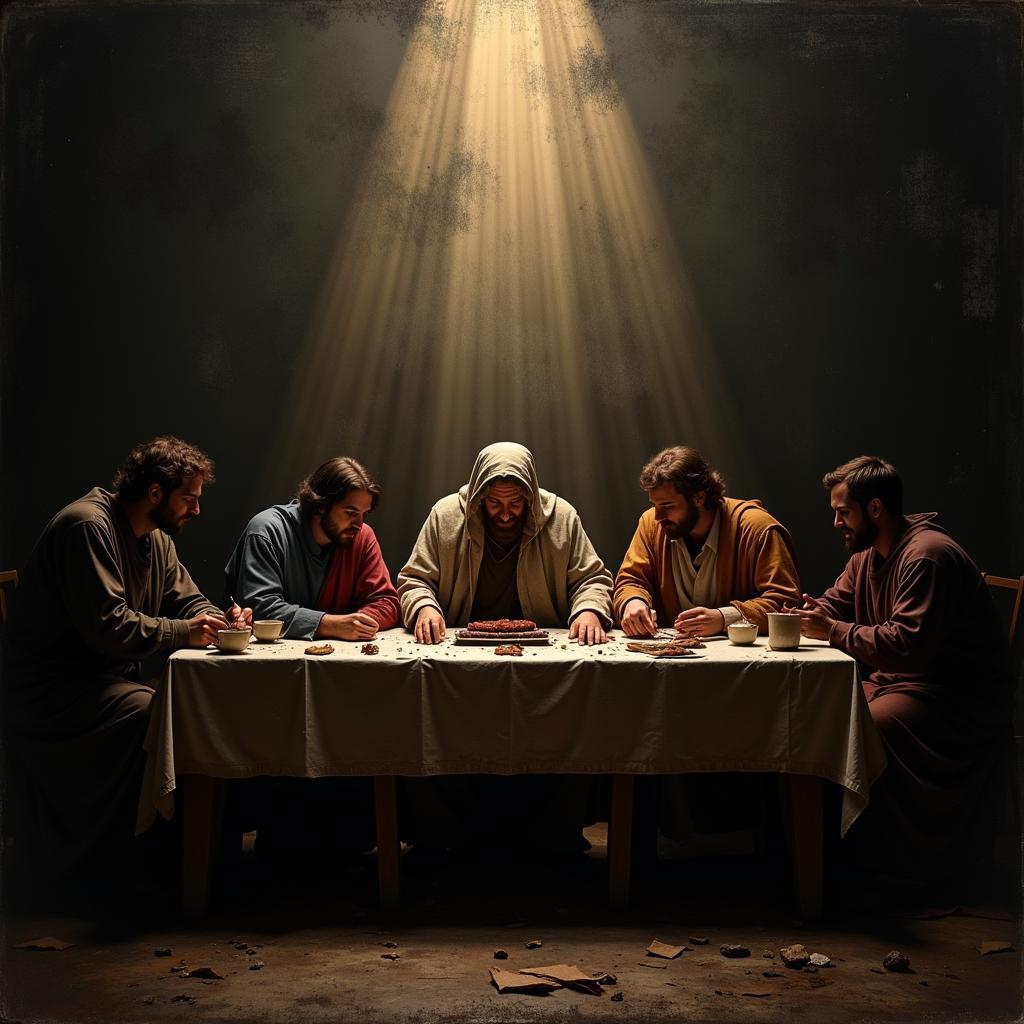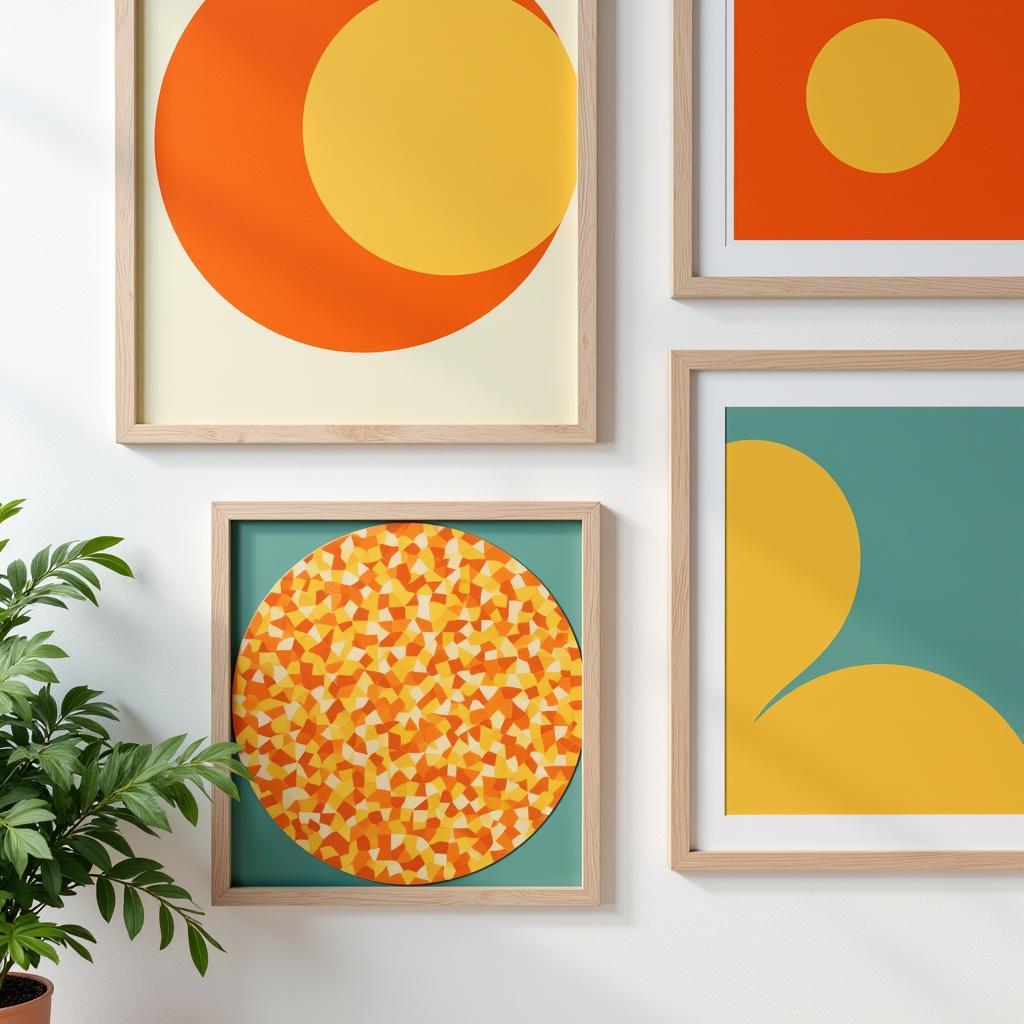Exploring the Depths of Abstract Biblical Art
Abstract Biblical Art offers a fascinating intersection of faith and creative expression. It moves beyond literal depictions of biblical narratives, inviting viewers to engage with spiritual themes on a deeper, more personal level. This exploration of abstract biblical art delves into its meaning, history, and the powerful impact it can have on both artists and audiences. See how artists use color, form, and composition to convey complex theological concepts and evoke profound emotional responses.
Understanding the Essence of Abstract Biblical Art
Abstract art, by its very nature, departs from representational forms, focusing instead on the underlying essence of a subject. When applied to biblical themes, this approach allows artists to explore the spiritual and emotional core of these stories in a way that traditional representational art might not fully capture. It’s about feeling the weight of the narrative, the resonance of the message, rather than simply seeing it. For example, an artist might use swirling colors to represent the chaos of creation or sharp, geometric shapes to symbolize the Ten Commandments. This allows for a very personal and subjective interpretation of the biblical text. Check out some inspiring examples of Jesus and art.
The Power of Symbolism in Abstract Biblical Art
Symbolism plays a crucial role in abstract biblical art. Artists often utilize specific colors, shapes, and forms to represent biblical figures, events, or concepts. The burning bush, for instance, might be depicted as a vibrant, fiery abstract form, while the dove of peace could be represented by a gentle, flowing shape. This use of symbolism adds layers of meaning to the artwork, encouraging viewers to contemplate the deeper spiritual significance.
A Journey Through the History of Abstract Biblical Art
While abstract art as a distinct movement emerged in the 20th century, its roots can be traced back much further. Early Christian art, with its focus on symbolism and iconography, can be seen as a precursor to abstract biblical art. The use of symbolic representations, like the fish for Christ or the lamb for sacrifice, laid the groundwork for later artists to explore more abstract interpretations of biblical themes. The 20th century saw a surge in artists embracing abstraction to express their faith, driven by both the upheavals of the time and the evolving understanding of spirituality. You can find a wide selection of Christian art posters showcasing this historical evolution.
Modern Masters of Abstract Biblical Art
Several prominent artists have made significant contributions to the field of abstract biblical art. Artists like Marc Chagall and Barnett Newman, though working in different styles, both engaged with biblical themes through abstraction. Chagall’s vibrant, dreamlike paintings often incorporated biblical figures and stories, while Newman’s minimalist works explored profound spiritual concepts through simple geometric forms.
Creating Your Own Abstract Biblical Art
Creating abstract biblical art can be a deeply enriching experience. It allows for personal reflection on scripture and encourages creative exploration of spiritual themes. It’s not about replicating a scene but rather about expressing your individual response to the text. Perhaps you’re drawn to the story of Jesus walks on water art? Or maybe you’re inspired by the symbolic meaning of a green apple art in a biblical context?
Tips for Aspiring Abstract Biblical Artists
- Engage with the text: Read and reflect on the biblical passage that inspires you. What emotions and ideas does it evoke?
- Explore different mediums: Experiment with various art materials and techniques to find what best suits your style.
- Embrace intuition: Allow your intuition to guide your creative process. Don’t be afraid to experiment and explore new ideas.
- Consider symbolism: Think about how you can use color, shape, and form to represent biblical concepts and figures.
 Abstract Interpretation of The Last Supper
Abstract Interpretation of The Last Supper
The Enduring Power of Abstract Biblical Art
Abstract biblical art continues to resonate with viewers because it offers a fresh and engaging way to connect with ancient stories. It invites contemplation, sparks dialogue, and encourages personal interpretation. By moving beyond literal representation, abstract art opens up new avenues for understanding and appreciating the timeless wisdom of the Bible. Consider exploring Christian wall art decor to bring this unique art form into your home.
FAQ
-
What is the difference between abstract and representational biblical art? Representational art aims to depict biblical scenes realistically, while abstract art focuses on conveying the underlying emotions and concepts through non-representational forms.
-
Where can I find examples of abstract biblical art? You can find examples in museums, galleries, online art platforms, and books dedicated to religious art.
-
How can I interpret abstract biblical art? Interpretation is subjective. Consider the artist’s use of color, shape, and symbolism, and reflect on your own personal connection to the biblical text.
-
Can I create abstract biblical art even if I’m not religious? Absolutely! Abstract biblical art can be appreciated by anyone, regardless of their religious beliefs.
-
What are some common themes explored in abstract biblical art? Common themes include creation, redemption, sacrifice, love, and the struggle between good and evil.
-
Are there any famous abstract biblical artists? Yes, artists like Marc Chagall and Barnett Newman are known for their abstract interpretations of biblical themes.
-
Where can I learn more about abstract biblical art? Art history books, museum websites, and online resources dedicated to religious art are excellent starting points.
Need more help?
For any further assistance, please contact us:
Phone: 02462573573
Email: [email protected]
Address: Savico Megamall, 7-9 Đ. Nguyễn Văn Linh, Gia Thụy, Long Biên, Hà Nội 10000, Việt Nam.
Our customer service team is available 24/7.





